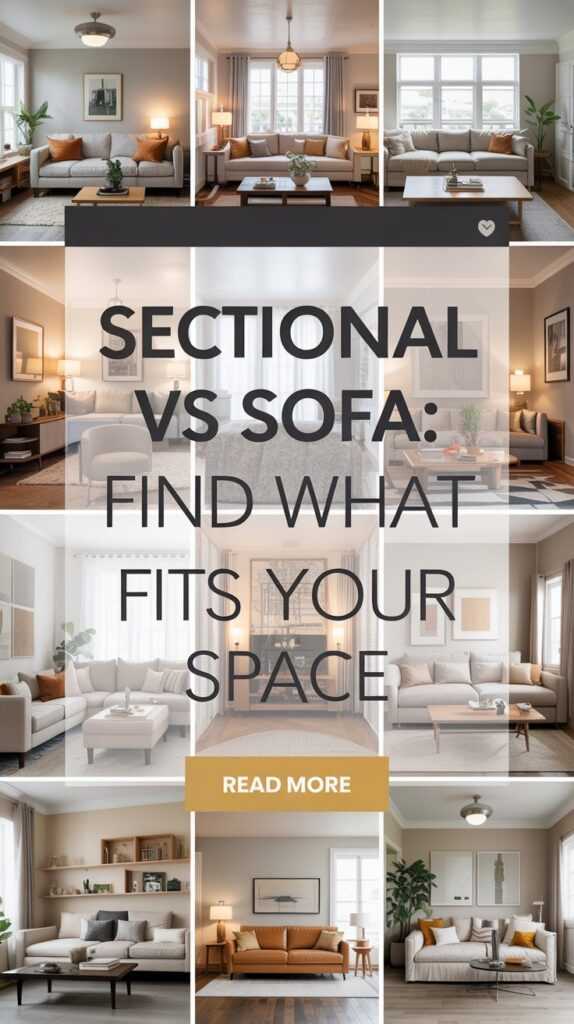Sectional or sofa: which is the better choice for your living room? Picking the right seating is more than just comfort. It’s about creating a space that fits your lifestyle, layout, and design.
Whether you’re furnishing a small apartment or a large family room, choosing between a traditional sofa and a versatile sectional can change the room’s feel. Each option has its perks, like flexibility, seating capacity, visual appeal, and space efficiency.
In this post, we’ll help you weigh the pros and cons. We’ll explore key factors and guide you to the best choice for your living room. The goal is to find something that fits your needs, matches your style, and supports how you use the space.
Space and Layout
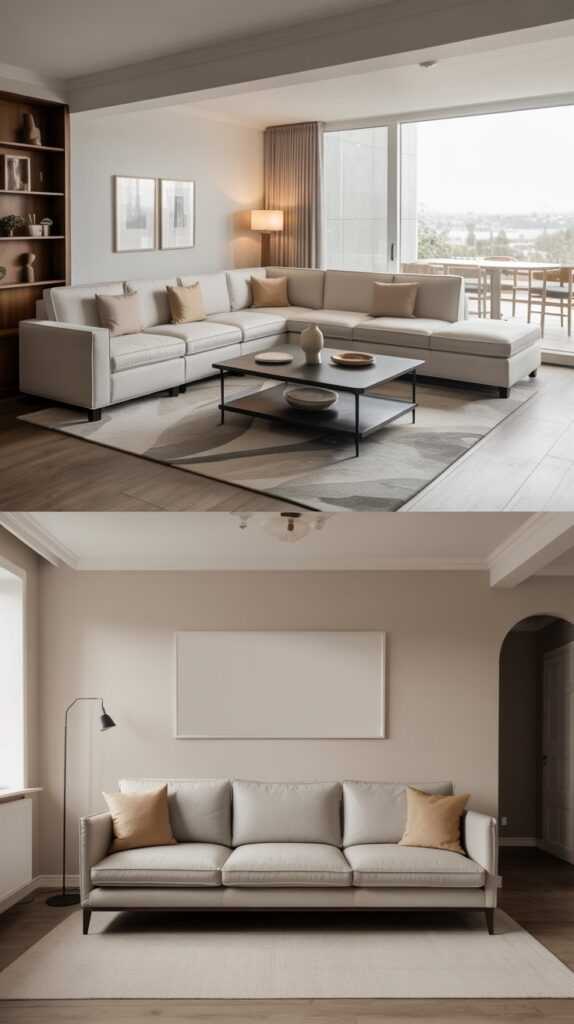
Sectionals work well in large living rooms. You can arrange them in many ways to fit your space. They offer plenty of seating for family and guests. Plus, their flexible design lets you change the layout easily.
Sofas are ideal for smaller rooms. They take up less space and can pair with chairs or ottomans for extra seating. This setup creates more walking room and makes the area feel less crowded.
When choosing between a sectional and a sofa, consider your room’s size and layout. Sectionals provide more seating but require more space. Sofas are versatile and fit nicely in tight spots. Pick the one that suits your needs best.
Seating Capacity
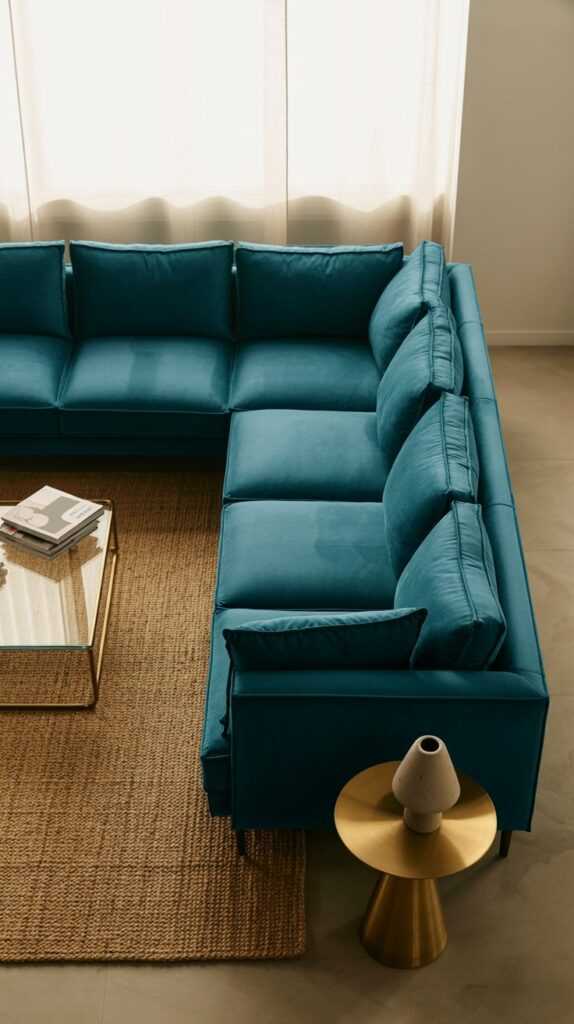
Sectionals provide more seating than traditional sofas. They often include extra parts like a chaise or corner unit. This makes them great for larger families or those who host guests often.
Sofas usually have less seating than sectionals, but they fit better in smaller spaces. Their simple design makes them easy to rearrange and pair with other furniture. This gives you more options for your room layout.
When choosing between a sectional and a sofa, think about your lifestyle and space. A sectional offers more seating and comfort for family gatherings. A sofa may work better in compact areas or for those who like a minimalist style.
Explore standout selections available on Amazon
Versatility
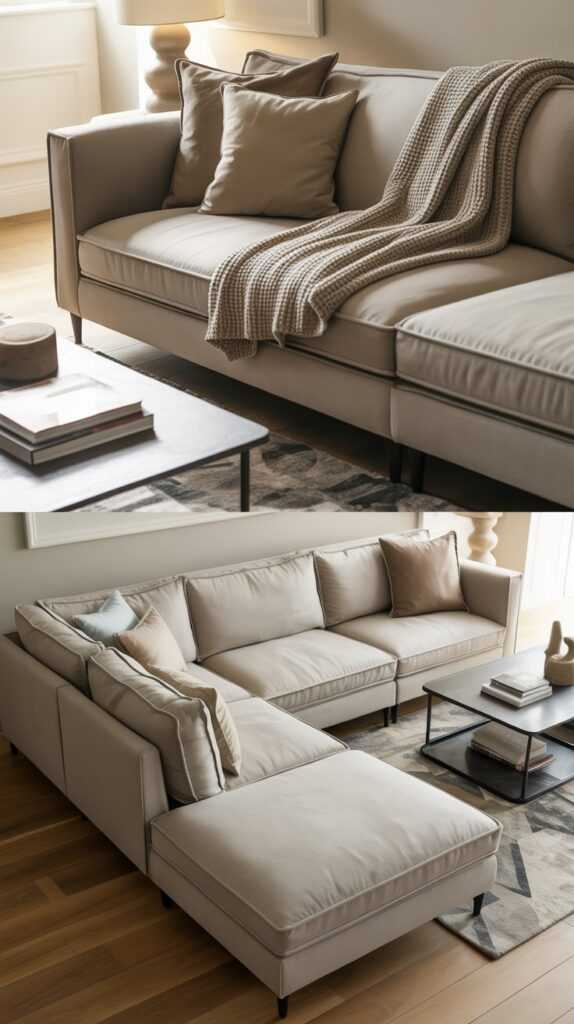
Sectionals provide great flexibility. You can rearrange the pieces to fit any space. This makes them ideal for homes that change over time or for those who enjoy frequent updates.
Sofas are usually easier to move. They fit into different rooms, allowing you to redecorate or relocate with ease. Sofas come in many styles and sizes, so you can find one that matches your space.
When comparing a sectional and a sofa, think about your lifestyle. If you host often or have a growing family, a sectional may offer more seating. On the other hand, a sofa can work well in smaller areas or for a classic look.
Style and Design
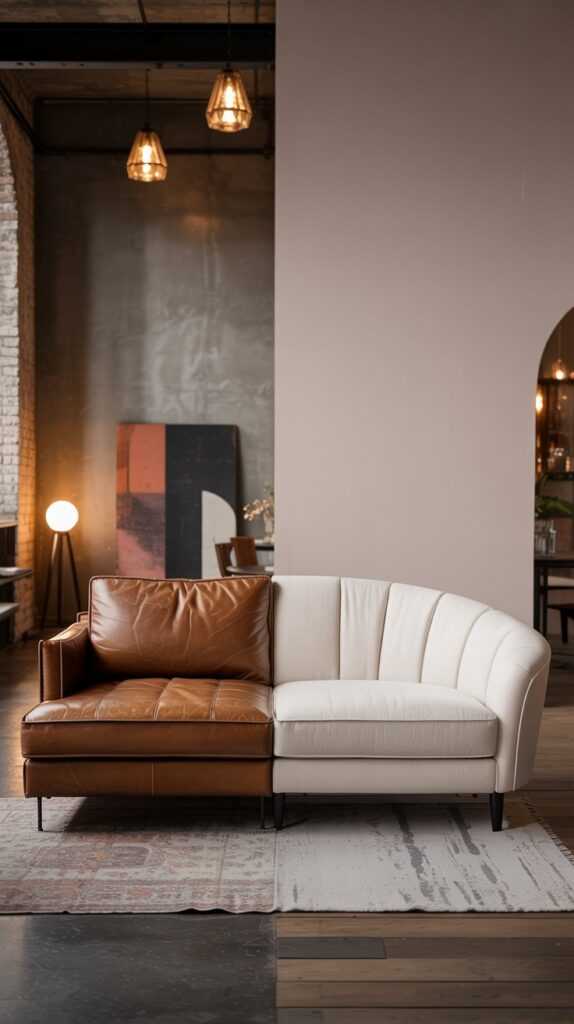
Sectionals offer great design flexibility. You can configure them for different room shapes and sizes. They can split into smaller sections or form one big seating area. This makes them perfect for both large and small spaces.
Sofas are more traditional and come in various styles and materials. They fit different aesthetics and are often easier to move. Sofas are a simpler choice for smaller living rooms or for those who prefer a classic look.
When choosing between a sectional and a sofa, think about your lifestyle and space needs. Sectionals provide ample seating for families or those who entertain often. Sofas may work better for compact spaces or if you like rearranging furniture frequently.
See our top picks now on Amazon
Cost and Investment
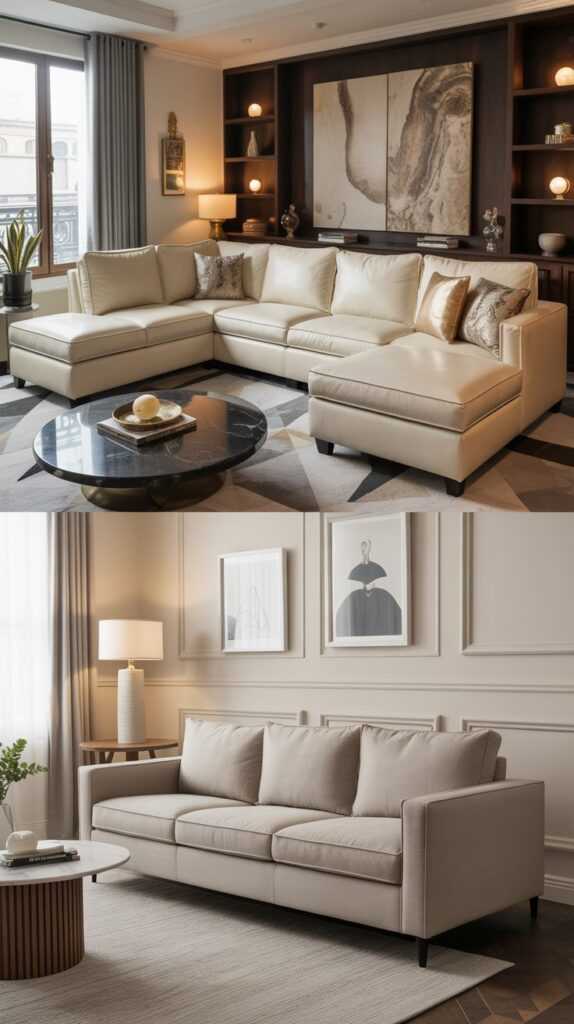
When looking at sectionals, the initial cost can be higher than for a regular sofa. But sectionals usually provide more seating and flexibility. This can be a better long-term investment based on your space and needs.
Sofas typically cost less upfront than sectionals. They come in many sizes and styles, making them a flexible choice for various living spaces and budgets.
Finding the best value depends on your needs and budget. Sectionals offer more seating, while sofas are often more affordable and easier to move around. This gives them a different type of flexibility and investment value.
Conclusion
Ultimately, choosing between a sectional and a sofa depends on your room size and layout. Sectionals provide more seating and flexibility.
Sofas are easier to move and fit in various spaces. Think about your lifestyle and available space to make the best choice for your living room.
What’s the Main Difference Between a Sectional and a Sofa?
A sectional is a seating unit made of several pieces. It can be arranged in various ways. A sofa is a single piece of furniture.
Sectionals often have corner and chaise elements. This design provides more seating and flexibility.
Sofas are smaller and easier to move. They work well in tight spaces. They suit those who like a classic look and a simple layout.
Is a Sectional Better for Large Living Rooms?
Yes, sectionals are great for large living rooms. They provide plenty of seating and fill the space well. Their modular design allows for various shapes, like L-shaped or U-shaped setups.
Sectionals also help define open areas, especially in homes without walls separating the living room from other spaces.
Are Sofas More Affordable Than Sectionals?
In most cases, yes. Sofas usually cost less upfront than sectionals. They are also more budget-friendly for delivery, maintenance, and moving around your space.
However, if you consider seating capacity per dollar, a sectional may offer better value. This is especially true for larger families or those who entertain often.
Which Is Easier to Move: A Sofa or a Sectional?
Sofas are easier to move. They are one piece and more compact. This makes them great for renters or anyone who likes to rearrange furniture.
Sectionals can be heavier and bulkier, especially the ones with more pieces. However, their modular design helps during transport. You can break them down into smaller parts.
Can I Use a Sectional in a Small Space?
You can, but it depends on the sectional’s shape and size. Some sectionals are made for smaller spaces and come in two or three pieces.
In tight rooms, a standard sofa with a chair or ottoman may offer more flexibility and space. Always measure your area before making a decision.
